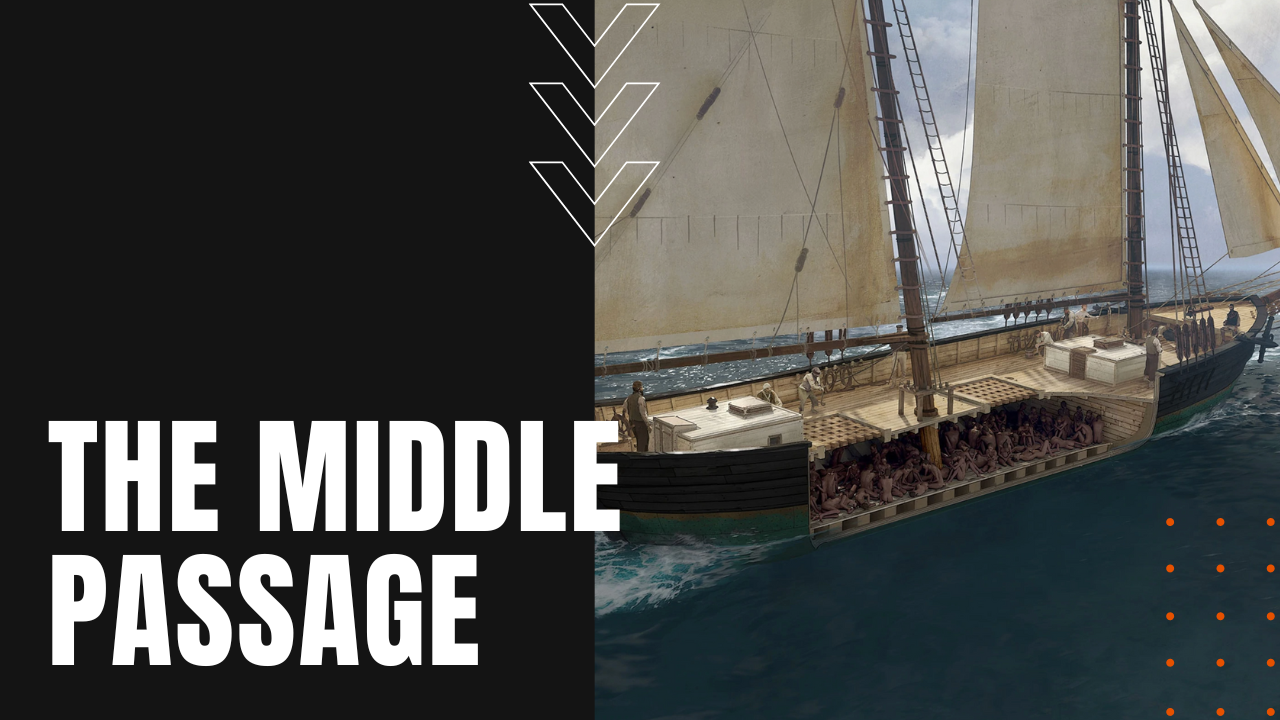The Middle Passage: A Brutal Slave-Trade Supply Chain

What was the Middle Passage?
From the 16th century to the abolition of slavery in America in 1865, some twelve and a half million Africans were torn from their families, homelands and languages, forced into slavery in a triangular trade route known as the Middle Passage.
The First leg of the passage witnessed the imprisonment of Africans after their capture by enemy tribes, before being traded for goods at African slave markets by European and American slave traders. Separated by gender, new slaves were crammed aboard ships known as Guineamen, who hailed mainly from ports in Portugal, Holland, France, England and America.
Guineamen Ship Conditions
Packed into the unventilated holds of Guineamen—so tightly that people frequently lacked enough space to sit down or move around—during the approximate 80-day passage to North and South America, some 15% would die from dehydration, starvation or disease.
Those who survived would be sold at auction after their arrival into the Americas, while the proceeds formed the third leg of the Middle Passage, when slavers returned home with cargos full of hides, tobacco, sugar and rum. Conditions aboard Guineamen were frequently unbearable for slaves and crewmen alike, and while slaves lacked daylight or movement, crewmen were forced to sleep on open decks to maximize the human cargo below.
Most crewmen were forced into the slave trade by dishonest barkeeps in collusion with slavers, who fed them vast amounts of alcohol, and when a given prospect drank beyond his ability to pay, their only choice was to sign onto Guineamen for impossibly low wages, taking the lives of an estimated 20% of crewmen during the 246-year history of slavery in North America.
Profit-driven slave traders enjoyed reduced payouts due to crew fatalities, while many of those who survived the return trip to Europe were frequently cheated out of wages altogether.
Rape, Resistance, Suicide and Hunger Strikes
Crewmen frequently raped female slaves below deck, while many slaves resisted their imprisonment through hunger strikes or suicide jumps from Guineamen decks. Over the centuries, many African tribesmen such as the Kru developed a reputation of proud resistance to the prospect of enslavement, leading to mass suicides that severely impacted a slave trader’s bottom line.
The number of deaths caused by suicide or hunger strikes has been estimated at two million lives, while those who died during forced marches to African slave markets and brutal voyages to the New World took the lives of an estimated two million more, making slavery and the Middle Passage one of the worst inhumanities in the history of man.
